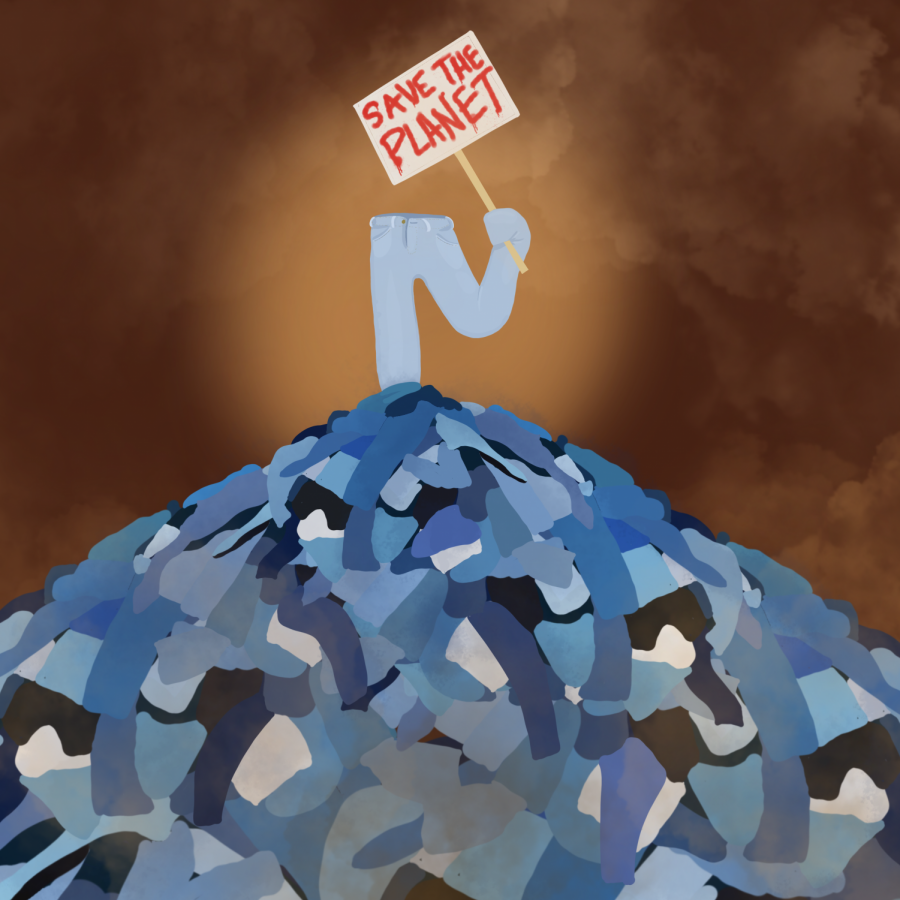The denim revolution
October 7, 2020
The fashion industry is unnecessarily damaging to the environment and to its low-level employees. American-made fashion brands no longer have to outsource manufacturing or promote fast fashion; this slow re-shoring leads to an increase of non-biodegradable waste in landfills in the United States and the use of pesticides to increase output, at the expense of farming communities whose health is compromised by these harmful chemicals. Fashion is sold to us as a form of expression, but what many consumers are blind to — or choose to ignore — is the lasting negative externalities of production and consumption that it has on our environment and global society. Levi’s is taking the steps in the right direction to become the leading brand in the fashion industry, choosing to resell their products rather than allow good clothing to languish in landfills.
The informative 2015 documentary “The True Cost” explains that the fashion industry is the second-most polluting industry behind oil and petroleum. The film details how the pressure to increase output while maximizing profits led to the shift of manufacturing overseas, where multinational corporations could provide much lower wages with the assent of foreign governments, themselves eager to develop their industry through the entry of multinational corporations. It shows the landfills and the piles of clothes dumped in foreign countries, who are suffocated by the clothes that we have thrown out after they have gone out of style. The changing styles seem to be a hoax to limit the life cycle of clothing items so consumers toss out the “old” and “dated” pieces that they only wore a few times and indulge in new items, increasing profits for multinationals at the expense of our environment. And it seems that Levi’s is finally seeking change after being a major contributor for a long time. They shared the lifestyle impact of one pair of Levi’s 501 Jeans, the only model of jeans that they still manufacture in the United States. One pair of Levi’s 501s alone is said to equate to 33.4kg of carbon dioxide emissions, the consumption of 3,781 liters of water, the use of 12 meters squared of land per year and eutrophication equal to 48.9 g PO4-e. To put this into perspective, Levi’s was said to have generated about 3.1 billion U.S dollars in 2019 in the Americas alone, according to the Statista Research Department — that is a great deal of denim products sold, to the lasting detriment of our environment.
As previously noted, Levi’s has taken a step back and begun to engage with the resale industry, allowing buyers to return their old Levi’s items to their stores where they can receive anywhere from $5 to $35 in exchange, according to Business Insider. When visiting Levi’s SecondHand website, one is confronted by a statement that reads: “If everybody bought one used item this year, instead of buying new, it would save 449 million pounds of waste. With Levi’s SecondHand, we’re inviting you to join us in a more sustainable future.” It is reassuring to see one of the leading generators of pollutive production taking responsibility for its impact, rather than ignoring it or placing blame on other parties. By effectively lengthening the life cycle of their denim, putting less of a strain on the production process to keep pushing out new and fresh looks and in this way, Levi’s is effectively putting the brakes on the “fast fashion” industry, with which both consumers and producers can barely keep up. Vogue includes a quote from Levi’s Chief Marketing Officer Jen Sey in their article who explains that “buying a used pair of Levi’s saves approximately 80% of the CO2 emissions, and 1.5 pounds of waste, compared to buying a new pair. As we scale this, that will really start adding up.”
I do think that Levi’s SecondHand drop is a significant step in the right direction. When such a major brand makes this kind of change, I believe others will follow in hopes of attracting more consumers, who have been turned away from buying their clothes in the past due to the unsustainable production process. It is important that other brands in the fashion industry follow in order to make a substantial and lasting impact on the still-growing landfills and pollution, as well as the exploitation of workers.






















